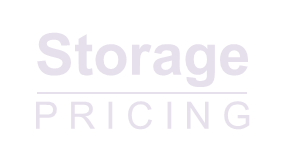There’s money in confusion…and it’s YOURS!


powered by
It is not enough to have the basic hardware broken down into dozens of pieces but then you have to select a dizzying array of software licensing options for both the array and any hosts using array features.
Here’s a sample SKU list from a major NAS/SAN vendor for a simple NAS array:
FAS6200HA-IB-BASE-1 GF-RAS56200HA,IB,1B CF,OS,R5 2
X70015A-ESH2-R5-C DS14MK2 SHLF, ACPS,14x144GB,15K,HDD 5
X6524-R6-C CBL, 2M, Optical, Pair, LC/C,-C,R6 2
X6530-R6-C CBL,0.5M,PATCH,FC SFPTO SFP-C,R6 6
X1941A-R6-C CBL,5M,CLUSTER4X,CU-C,R6 2
X871A-R6-C 20A Storace Equipment Cabinet,-C,R6 1
X875A-R6-C 20A PWR CORD (4),CABINET, NEMA-S,R6 1
X800-42U-R6-C Cabinet Component Power Cable, R6 14
X5517-R6-C Storage cabinet, Rail Set,42U,-C,R6 1
X6529-R6-C SFP, Optical, Pair, LC/LC, -6, R6 4
X8773-R6-C Multiple Product Tie-Down Bracket,- 2
SW-T4C-CIFS-C CIFS CIFS Software, T4C-C 2
SW-T4C-ISCSI-C iSCSI iSCSI Software, T4C-C 2
SW-T4C-NFS-C NFS NFS Software, T4C-C 2
SW-T4C-SRESTORE-C SnapRestore Software,T4C,-C 2
SW-T4C-SME-C SnapManager Software, Exchange, T4C 2
SW-T4C-SMSVS-C SnapMirro-SnapVault Software Bndl, 2
Software (Host Side)
SW-SDR-WIN SnapDrive, Windows 10
SW-SSP-SDR-WINDOW SW Subs SnapDrive for Windows 3.0 10
SW-SMBR-1000PK Single Mbox Recovery, 1000pk 1
SW-SSPVN-SMBR-1000PKendor SW Sub SMBR, 1000pk 1
SW-SDR-SOL-TIER1 SnapDrive, Solaris, Tier 1 10
1-2CPU
SW-SSP-SDR-SOL-TIER1SW Subs, SDR Solaris Support, Tier 10
SW-SDU-CPU SW, SnapDrive UNIX, CPU 5
SW-SMO-CPU SW, SnapManager Oracle, CPU 5
SW-SSP-SMO-CPU SW, SUB, SnapManager Oracle 5
Services and Support
CS-S-INST Initial Installation-DS14 1
CS-A SupportEdge Standard-FAS270 Mths: 3 2
Wow!
All we wanted was a high-performing storage array.
Instead, we got a dissertation on what the sales person thinks we need. Notice that this proposal contains base hardware, base software, host software, installation services and support. Although this would be considered a “simple” configuration, it is still complex and a potential customer would be hesitant to make any changes or delete any proposed features.
What’s missing?
What’s worse is if the customer proceeds with this proposal thinking they have “covered all their bases” for the future. However, since many projects increase in complexity over time, new features may be needed but this a la carte model requires the customer to re-budget and purchase additional options in the future…more money.
Tegile Systems’ approach eliminates complexity
Compare this nightmare configuration with how Tegile sells their arrays; single SKU and all-inclusive.
Here is a typical Tegile configuration for a fault-tolerant (no single point of failure) 22TB system with SSD and HDD drives.
| SKU | Description | Qty |
| HA2100 22TB | The Zebi HA2100 is a 2U hybrid NAND flash/SATA drive array designed to manage large-scale projects. Software stack includes de-duplication, compression, thin provisioning, snapshots, remote replication and application profiles. – 22 TB Raw Capacity – 48 GB DRAM – 600 GB SSD (Flash) – (12) 1 GbE data ports, (2) IP-KVM management ports |
1 |


powered by
Want to save money? Consider eliminating complexity with Tegile low cost, high-performing hybrid arrays.





